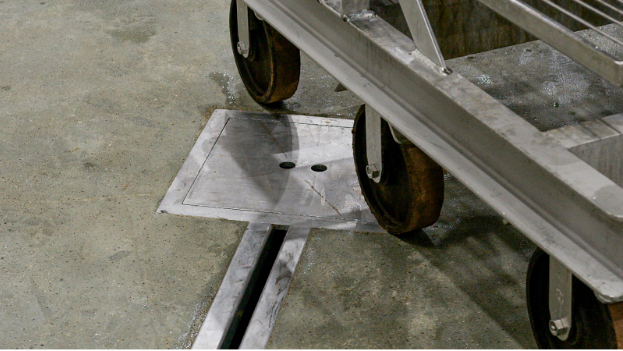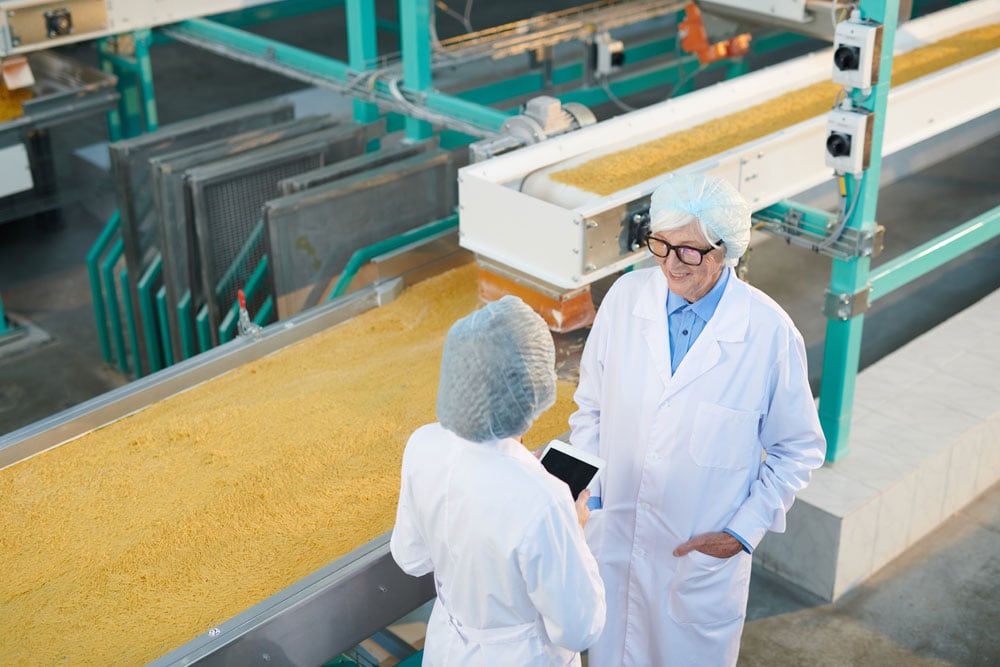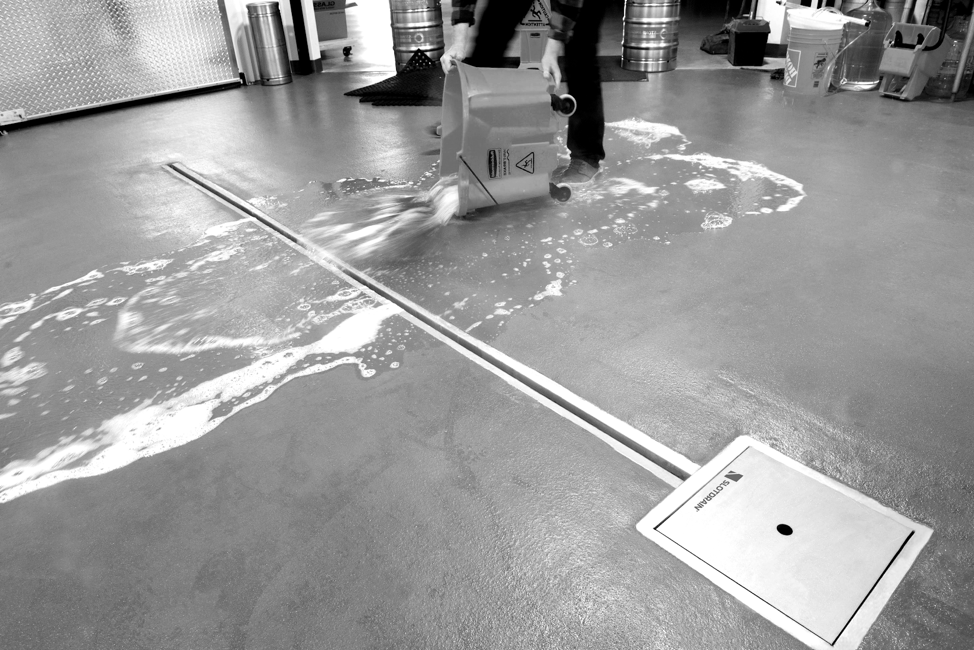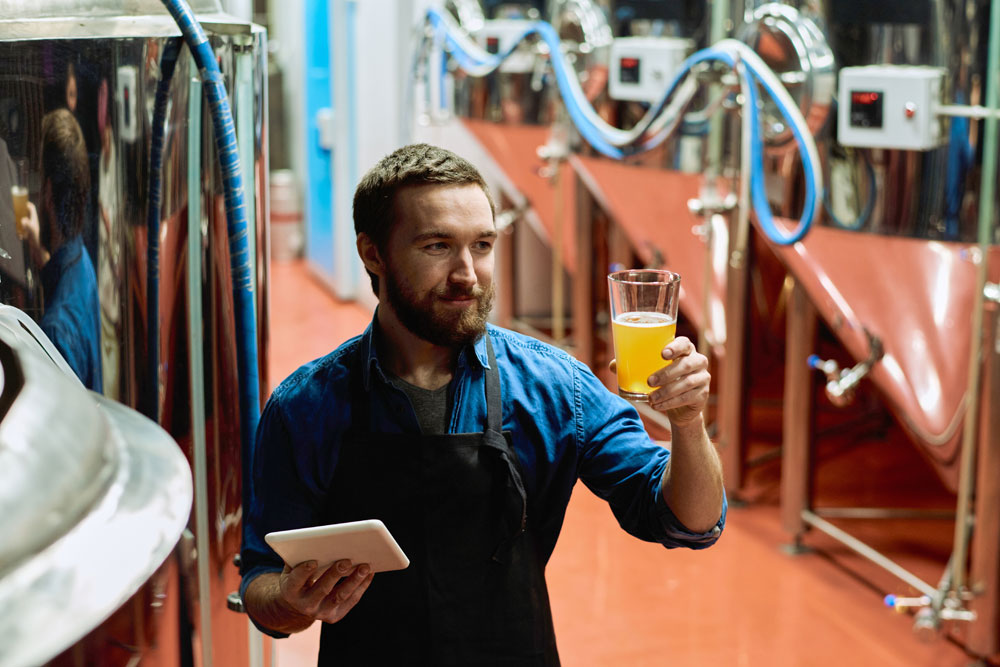Although drainage systems vary for every industry, there are strict requirements in place for the food production industry.
Not only do drains need to help manage wastewater, keep floors dry, and help employees stay safe, but they also need to be sanitary. To make this happen, food production facilities often use what’s called sanitary drain design.
Here’s everything you need to know.
WHAT IS SANITARY DRAIN?
Sanitary drains, like all drains, help manage wastewater and water runoff.
Sanitary drain design is meant to help maintain high levels of cleanliness and sanitation, which is critical in many applications, such as food production. Sanitary drains are designed to help prevent the spread of bacteria and viruses that can cause illness, which leads to safer and cleaner environments and products.
HOW SANITARY DRAINAGE HELPS WITH FOOD SAFETY?
Drainage not only removes wastewater; it is also an essential part of food safety that
Helps to Prevent Contamination
Wastewater can be full of bacteria and pathogens. Left standing, employees can unintentionally send them into the air as they move about, where they can contaminate surfaces and products. A sanitary drain will remove this wastewater and prevent this from occurring. The design of the drain will also ensure that there is no way for bacteria to cling to its surface.
Reduces The Risk of Pest Infestations
Standing water and food debris can attract all sorts of pests: flies, cockroaches, and even rodents, which all carry bacteria and diseases. Having sanitary drainage in place will eliminate standing water and trap odors by preventing pests from catching a scent and creating an infestation.
Is Easier to Maintain
Food production facilities are required to maintain high levels of cleanliness and sanitation, including their drainage system. A sanitary drainage design will minimize the time it takes to clean and sanitize the drainage system and make it a much easier process for employees.
Ensures Compliance with Food Safety Laws
The food industry has strict laws and regulations by which they are expected to abide. There are guidelines regarding everything, including floor drainage, which needs to be sanitary and meet various requirements like slope and material.
Non-sanitary vs. Sanitary Drain Design

While drains are available in various materials, sizes, and shapes, not all are sanitary. It is vital to make the right choices. Otherwise, the system will be challenging to clean since bacteria can cling to the walls.
Materials Used in the Design
The material is essential when it comes to sanitary drainage. Sanitary drains need to use materials that can survive high-intensity environments (i.e. extreme temperatures, high water pressure, and chemicals). They must also be nonporous to ensure they are easy to clean, and sanitize.
That makes porous materials like clay and concrete unsuitable. These materials are not durable enough for a food production environment. Similarly, options like cast iron and galvanized steel can corrode over time, which leaves them with rough surfaces that bacteria can cling to and they are difficult to clean.
Materials better suited to sanitary drainage include PVC, high-density polyethylene (HDPE), and stainless steel. These materials have smooth, nonporous surfaces and are highly resistant to corrosion. However, PVD and HDPE are unsuitable for high-temperature environments.
Therefore, stainless steel is preferred for many sanitary drainage applications where high heat is typical, like in food production facilities.
The Angles in the System's Design
Sharp angles, like those typical in trench drains, are not ideal for sanitary drain design because they provide spots for bacteria to hide and multiply. Even if the system is cleaned and sanitized daily, corners and crevices can get missed, which allows bacteria to continue to grow and spread. Ideally, sanitary drains should have as few edges as possible to eliminate the risk of bacteria remaining—even after cleaning and sanitizing the drain.
Seams in the Design
Some drains come with seams, which can also provide a point for bacteria to latch onto and make ensuring the system is fully clean and sanitized difficult. To avoid this, sanitary drainage should feature a seamless design.
INDUSTRY APPLICATIONS FOR SANITARY DRAINAGE
As mentioned, different industries have different needs. While all industries may not necessarily need sanitary drainage, they can benefit from them greatly. Some possible applications for sanitary drainage include:
Stores
Grocery stores can benefit from sanitary drains throughout the store, particularly around cold storage and liquids, where they can quickly help remove spills to minimize the risk of pests catching the scent and creating an infestation. Stores can also have sanitary drainage in restrooms in case of backups and overflow; that way, the mess is contained and can quickly be cleaned up.
Factories
Factories that produce different products need sanitary drainage for similar reasons. They will need to quickly clean up spilled liquids to eliminate any risk of bacteria and contamination from occurring.
Warehouses
Warehouses may sometimes house liquids; if products fall, bottles can break. A sanitary drain can safely divert any spilled liquid to the proper disposal outlet. Drainage will also help collect water runoff that may come with rain entering with employees and vehicles.
Swimming Pools
Sanitary drainage can help prevent contaminated water from harming the pool and pool water from harming the surrounding property.
Processing Plants
Like warehouses, plants may deal with various different fluids, and having sanitary drainage in place will ensure the system can handle any liquid that may touch the floor and safely transport it without damage. They are also more suitable for plants that work with extreme temperatures because they won't become damaged from exposure to extreme heat or cold.
FOODSAFE DRAINS FOR FOOD PRODUCTION NEEDS
FoodSafe Drains is a sanitary drainage company focused on creating food-safe drainage for various applications across the industry. Their most well-known offering is the Slot Drain, but they also offer Trench Drains, Area Drains, and various drain companion pieces. All of these systems and accessories use T304 and T316 stainless steel and are NSF/ANSI/3-A certified.
The FoodSafe Slot Drain
The Slot Drain is a seamless system that arrives pre-sloped and pre-assembled, for easy installation and retrofitting. As the name implies, the Slot Drain has a slim slot-like opening with three widths: 1/2", 1", and 1.25" wide, which eliminates any need for grates. Despite this slim opening, it offers flow rates up to 27 GPM per foot of drain.
The 10,000 Series and 6,000 PLUS-R Series are Load Class E rated, which makes them suitable for the toughest conditions, including packing and shipping areas, where they may be subjected to heavy loads daily. The 6,000 PLUS Series offers a Load Class C rating which makes it better suited for other areas.
These Slot Drain systems are compatible with Clean in Place (CIP) and Flush Flo cleaning systems, which allow you to either fully or partially automate cleaning and sanitation processes.
Area and Hub Drains
FoodSafe Drains offers many area and hub drains ideal for smaller spaces. The Area Drain selection includes the cone, round, and square area drains. These area drains have a Load Class E rating and flow rates up to 32 GPM.
The FoodSafe Hub Drain can be connected directly to piping or equipment and is a great option to provide multiple entry points.
Finally, the FoodSafe Floor Sink is a new take on the traditional grated point drain. This option can remove large volumes of water and debris and has the same Load Class E rating as the other systems.
Trench Drains
Finally, there is the FoodSafe Trench Drain. It resembles the traditional trench drain, but FoodSafe Drains offers different forms for a more food-safe approach.
While there is a traditional flat bottom system, there are also models with rounded and V-shaped bottoms, which eliminates some of the corners known to harbor bacteria. Like the rest of the systems, the grate is made with dense stainless steel and is forklift-rated, while the system channel can range from Load Class A to Class E. They also come in various widths, with varying flow rates up to 200 GPM per foot of drain.
FoodSafe Catch Basin
All of these systems are compatible with the FoodSafe Catch Basin, which has a strainer basket that allows lost objects to be easily retrieved. This is a customizable product that you can make to fit your facility's needs. It offers a Load Class E rating, which makes it safe for any part of the facility. The strainer is tamper-proof and magnetic, and only accessible to those with a key. It adds security to ensure that nobody can tamper with the system.
Sanitary Drain Installation
Installation of sanitary drainage systems can vary depending on the brand and type of drain. Some systems, like trench drains, require more excavation. FoodSafe Drains products are designed to make installation as easy as possible by requiring only a few people. For example, a 15-foot section of the Slot Drain can be installed within 30 minutes by two people.
Sanitary Drainage for Safe Food Production
Food production facilities have strict requirements they must abide by, or they can be subjected to legal and financial repercussions. One of those requirements is to have a sanitary drain design; sanitary systems are crucial in maintaining a safe, sanitary facility and preventing bacteria and contamination. FoodSafe Drains offers many options, with options suitable for every part of any facility.
Contact FoodSafe Drains today to learn more about our sanitary drain designs and discover which one is best for your facility.
.png?width=600&height=338&name=foodsafe_drains_10000_series_slot_drain%20(1).png)




